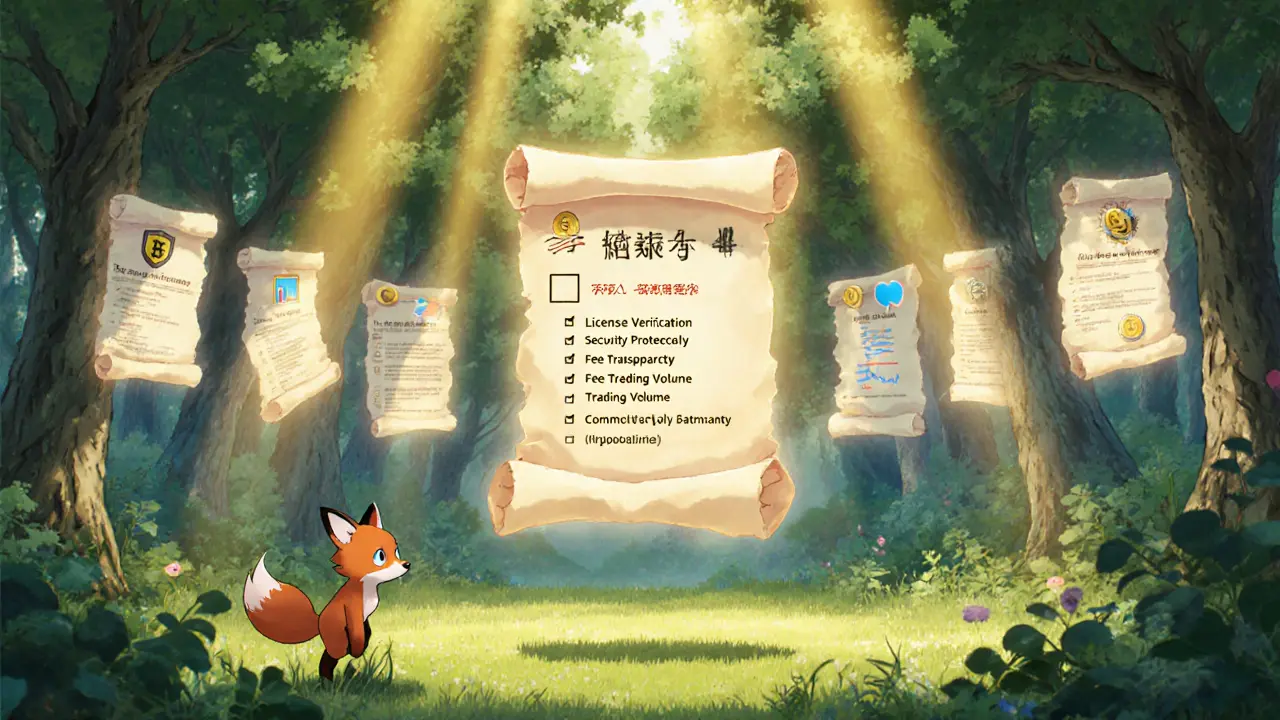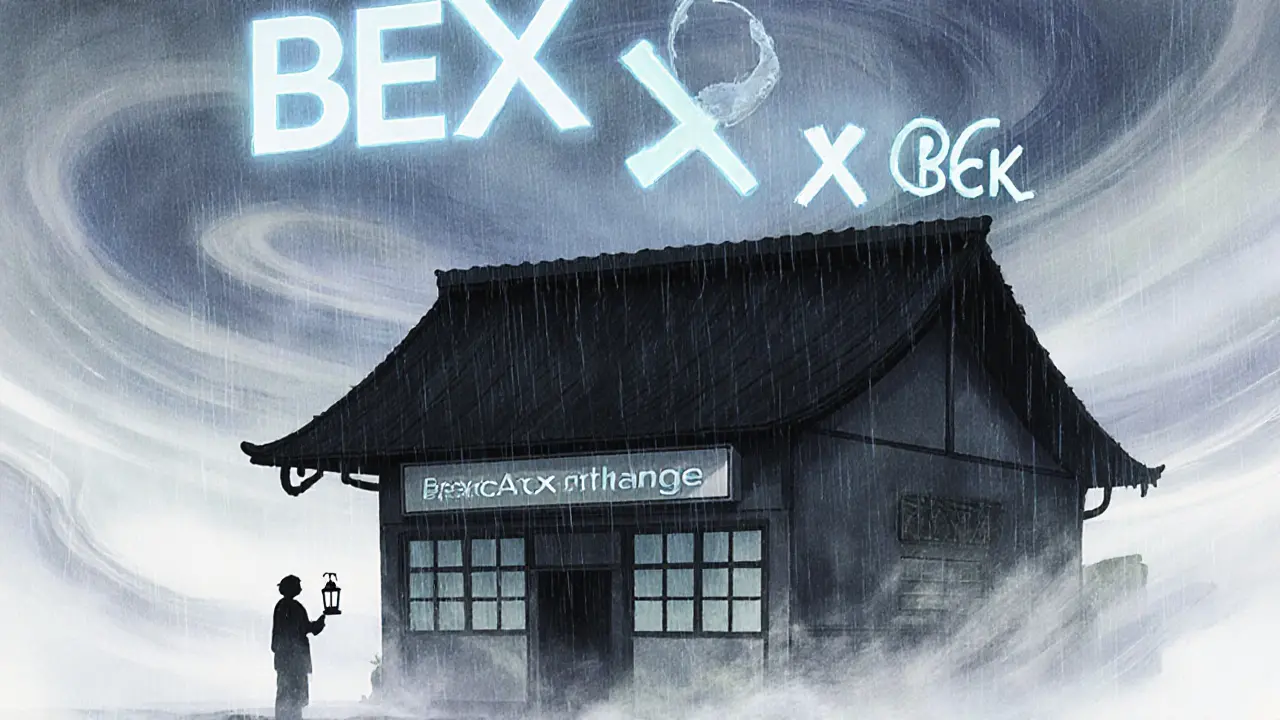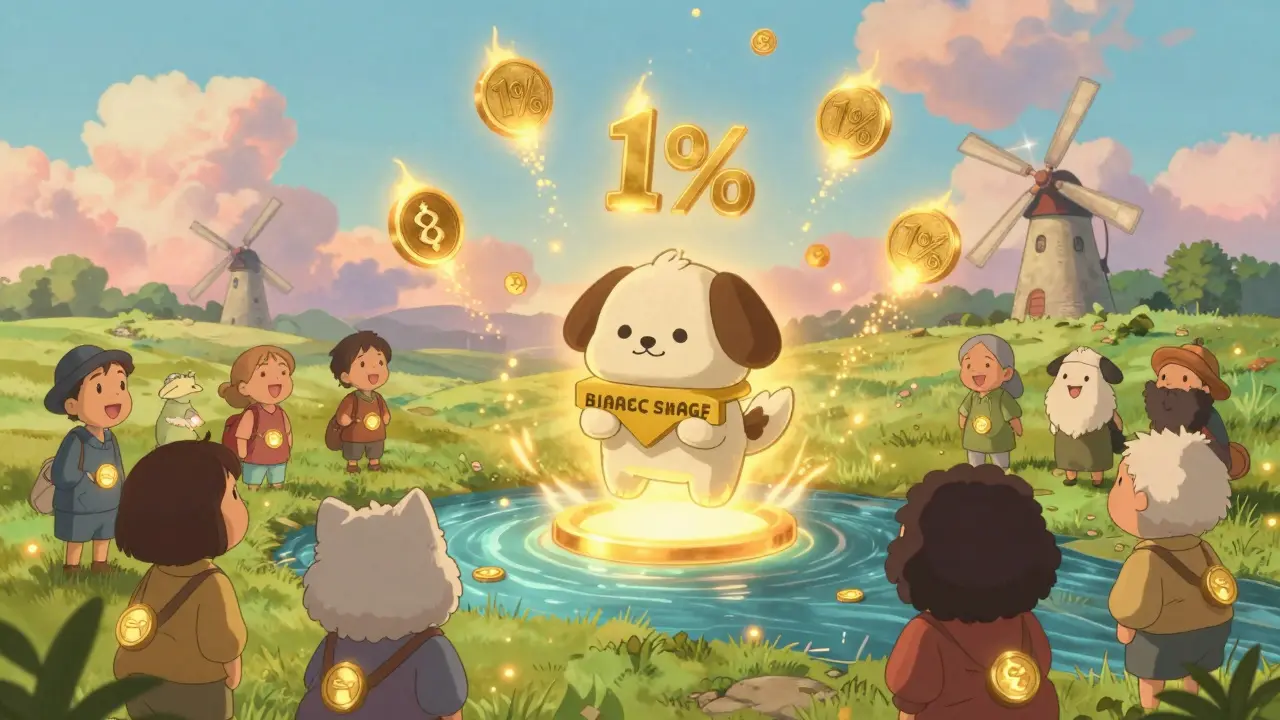Crypto Exchange Legitimacy Checker
This tool helps you determine if a crypto exchange is legitimate by checking key indicators like licensing, security, and transparency.
Quick Takeaways
- TYSLIN is not listed in any major exchange registries or regulator databases.
- Lack of transparent fee schedules, trading volumes, or security details raises red flags.
- Use a solid checklist (license, security, fees, support) before depositing any funds.
- Established alternatives like Coinbase, Kraken and Bybit offer proven safety and compliance.
- If you still consider TYSLIN, start with a tiny test amount and withdraw immediately.
When you hear the name TYSLIN as a cryptocurrency exchange, the first question should be - does it actually exist in the regulated ecosystem?
What is TYSLIN?
At the time of writing (September302025), no reputable source lists TYSLIN among licensed exchanges. Major registries - from the US Securities and Exchange Commission to the UK Financial Conduct Authority, from Canada’s FINTRAC to Malaysia’s Securities Commission - contain no entry for a platform with that name. This silence suggests either a brand new launch that has not yet garnered coverage, a regional service operating under a different legal name, or simply a typo of an existing exchange.
Why the Information Gap Matters
Transparency is the backbone of any trustworthy crypto platform. When you cannot find basic data such as the founding year, headquarters, or regulatory status, you lose a critical safety net. Below are the main red‑flag categories that an absent record typically points to:
- Regulatory compliance: No public license number, no MAS, FCA, or SEC filings.
- Security protocols: No mention of cold‑wallet storage, multi‑factor authentication, or audit reports.
- Trading volume: No data on 24‑hour volume, order‑book depth, or market‑share metrics.
- Fee structure: No clear schedule for maker/taker fees, withdrawal costs, or hidden spreads.
- User base: No verified user count, no community forums, no public reviews on Trustpilot or Reddit.
How to Evaluate an Unknown Exchange - A Practical Checklist
Before you click “Buy” on any platform, run through the following list. Each point aligns with a key entity you should verify.
- License verification: Look for a registration number on the website and cross‑check it with the regulator’s database.
- Security measures: Does the exchange publish a security whitepaper? Check for cold‑storage percentages, hardware‑wallet integrations, and regular penetration testing.
- Fee transparency: A clear table showing maker, taker, deposit and withdrawal fees is a good sign. Beware of “zero‑fee” claims that usually hide wide spreads.
- Supported assets: Reputable platforms list each coin with its contract address and audit status.
- Customer support: 24/7 live chat, email response time, and a searchable knowledge base indicate a mature operation.
- Community reputation: Google the exchange name, read Reddit threads, and check Trustpilot scores. Genuine platforms have a mix of positive and negative feedback.
- Liquidity: High daily volume reduces slippage. Look for a volume chart on CoinMarketCap or the exchange’s own stats page.
- Withdrawal limits: Unreasonable limits can trap your funds. Verify both minimum and maximum thresholds.

Comparison with Established Exchanges
| Criterion | TYSLIN | Coinbase | Kraken | Bybit |
|---|---|---|---|---|
| Regulatory license | None publicly listed | U.S. SEC, EU, Canada | U.S. FinCEN, EU, Japan | Dubai Financial Services Authority |
| Security protocol | Unclear | Cold‑wallet 98%, 2FA, insurance $250M | Cold‑wallet 95%, 2FA, bug bounty | Cold‑wallet 95%, hardware‑wallet integration |
| 24‑h trading volume (USD) | Not disclosed | $12B | $8B | $6B |
| Supported cryptocurrencies | Unknown | 150+ (incl. NFTs) | 120+ | 200+ |
| Fee structure | Not published | 0.5% maker / 0.5% taker | 0.16% maker / 0.26% taker | 0.075% maker / 0.1% taker |
| Customer support | Unverified | 24/7 live chat, phone | 24/7 live chat, email | Live chat, ticket system |
Risks of Using an Unverified Platform
Even with the best intentions, diving into an exchange that lacks public data can expose you to several dangers:
- Fund loss: Without audited security, your crypto could be stolen or frozen.
- Regulatory seizure: Authorities may shut down an unlicensed service, leaving users without recourse.
- Hidden fees: Some platforms embed large spreads or charge for basic actions.
- Poor liquidity: Low volume means your order can move the market price dramatically.
If any of these scenarios sound familiar, treat the platform with extreme caution.
Safe Alternatives to Consider
Below are three exchanges that meet every checklist item. They are regulated, transparent, and have a solid track record in 2025.
- Coinbase - Ideal for beginners, offers insurance on custodial assets and a simple UI.
- Kraken - Known for low fees, robust security, and a wide range of fiat pairs.
- Bybit - Attractive for derivatives traders, strong liquidity, and a clear fee schedule.
All three provide mobile apps, API access, and 24/7 support, making them reliable choices over an unknown name like TYSLIN.
Next Steps if You Still Want to Test TYSLIN
- Create a fresh email address solely for the test.
- Deposit the smallest possible amount (e.g., $10 worth of BTC).
- Attempt a withdrawal within 24hours; monitor how long the process takes and whether any extra verification is asked.
- If the withdrawal fails or you encounter unexpected fees, cease all activity immediately.
Frequently Asked Questions
Is TYSLIN a legit crypto exchange?
There is currently no public evidence of licensing, security audits, or trading volume for TYSLIN. Until such data is disclosed, treating it as unverified is the safest approach.
How can I verify an exchange’s regulatory status?
Check the regulator’s official register (e.g., FCA, SEC, MAS). Look for a license number on the exchange’s “About” page and confirm it matches the regulator’s database.
What are the most common red flags?
Missing licensing info, vague security details, no disclosed fees, low or no trading volume, and an absence of community feedback are all warning signs.
Can I safely use TYSLIN for a small test trade?
If you decide to test, only send an amount you can afford to lose, and withdraw immediately after confirming the process works. Monitor for any unexpected delays or fees.
Which established exchanges should I consider instead?
Coinbase, Kraken, and Bybit are fully regulated, transparent about fees, and have proven security measures. They are safe choices for both beginners and seasoned traders.










Naomi Snelling
November 10, 2024 AT 06:02There's a good chance that TYSLIN is a front for a larger shadow operation, hidden behind a glossy UI. They'd rather stay invisible in regulator databases to avoid oversight. Anything that can't be traced back to a legal entity should raise alarms. Keep your keys and your money far away until they reveal concrete proof.
Carl Robertson
November 17, 2024 AT 17:13The drama around this "new" exchange is already overblown, but that doesn't make it any less suspicious. It's like watching a low‑budget thriller that pretends to be a blockbuster. In the end, it's just another ghost waiting to vanish.
Billy Krzemien
November 25, 2024 AT 04:23For anyone considering a test run, start with an amount you could comfortably lose. Verify the withdrawal process before you commit larger sums. Keep records of every transaction – screenshots and timestamps help if something goes wrong. This disciplined approach protects you while you gather data.
Oreoluwa Towoju
December 2, 2024 AT 15:33Transparency is the first line of defense. If they can't show a license, they're not trustworthy.
Jason Brittin
December 10, 2024 AT 02:43Nice stack of advice, but let’s be real – most folks skip the tiny test and dump cash straight in. 🤷♂️ Still, the checklist beats winging it blindfolded. 🛡️
Katrinka Scribner
December 17, 2024 AT 13:53i totally get it, sometimes u just wnat to jump in and go! lol, but really, testing is sooo important, trust me on this :)
Waynne Kilian
December 25, 2024 AT 01:03We often equate anonymity with danger, yet anonymity also protects privacy. The real question is whether the platform respects both security and freedom. A balanced view helps us navigate this grey zone.
Michael Wilkinson
January 1, 2025 AT 12:13Enough with the vague statements – demand concrete evidence now. If they can't deliver, walk away immediately.
Clint Barnett
January 8, 2025 AT 23:23The checklist you laid out is spot‑on and worth keeping at the top of every trader’s mind.
First, licensing isn’t a decorative badge; it’s a legal contract that forces an exchange to meet baseline consumer‑protection standards.
Without that, you have no recourse if the platform disappears overnight.
Second, security protocols such as cold‑storage ratios and mandatory two‑factor authentication are the only practical barriers against a ransomware‑style breach.
If an exchange refuses to publish a security whitepaper, you should assume the worst.
Third, opaque fee structures are often a smoke‑screen for wide spreads that erode your returns before you even notice.
A “zero‑fee” claim usually hides a 0.3‑0.5 % hidden cost baked into the order‑book.
Fourth, trading volume isn’t just a brag‑right; it directly impacts slippage and order‑fill reliability.
Low volume platforms can move the market dramatically with a modest order, leaving you with a bad fill.
Fifth, robust customer support is a lifeline when funds get frozen or when you need urgent KYC verification.
24/7 live chat with real humans is a far better safety net than a bot‑only ticket system.
Sixth, community reputation can be mined from Reddit threads, Trustpilot scores, and even GitHub issue trackers for open‑source components.
A handful of genuine negative reviews mixed with many positive ones is a healthy sign; all‑positive chatter is a red flag.
Finally, liquid withdraw‑limits that match your intended trade size are essential; otherwise you risk being trapped.
In practice, I always start with a $10‑$20 test deposit on any new platform, execute a tiny trade, and request an immediate withdrawal.
If the withdrawal completes within a few hours without extra hurdles, that’s a green light to scale up gradually.
Otherwise, cut your losses and move to a vetted exchange like Coinbase, Kraken, or Bybit, where the infrastructure has been battle‑tested for years.
Jacob Anderson
January 16, 2025 AT 10:33Sure, because “no license” always means a secret billionaire backing it.
Rajini N
January 23, 2025 AT 21:43If you decide to give TYSLIN a try, make sure you enable both email and app‑based two‑factor authentication, and disconnect any API keys you’re not actively using. Also, keep your withdrawal address on a separate hardware wallet to minimize exposure.
Kate Roberge
January 31, 2025 AT 08:53Everyone’s singing the “stay away” hymn, yet some of the best opportunities come from the underdogs that dodge the regulators.
MD Razu
February 7, 2025 AT 20:03Let us not be naïve in assuming that every unregulated entity is a wolf in sheep’s clothing; sometimes the very act of stepping outside the jurisdictional labyrinth provides a fertile ground for innovation. Yet, if the platform’s architecture fails to disclose its governance model, the user becomes an unwitting participant in an opaque experiment. The prudent path lies in demanding transparency as a non‑negotiable prerequisite, because without it, the edifice collapses under its own secrecy. In other words, curiosity must be paired with rigorous verification, lest we fall prey to the siren call of unchecked freedom.